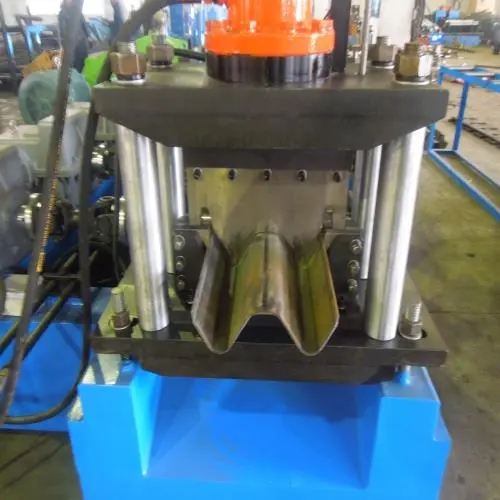
Understanding the Role of Stud Roll Forming Machines in Modern Manufacturing
In the realm of manufacturing, precision and efficiency are paramount. One of the pivotal technologies enabling these aspects is the stud roll forming machine. This equipment has revolutionized the way metal studs and tracks are produced for various construction applications, providing unparalleled benefits in terms of speed, accuracy, and cost-effectiveness.
What is a Stud Roll Forming Machine?
A stud roll forming machine is designed to produce metal studs that are used extensively in the construction industry, particularly in the framing of walls, ceilings, and partitions. The machine molds flat metal strips into a desired profile through a series of rolls and stations. As the metal strip passes through the rolls, it is progressively shaped into the final form, which can include complexities like flanges and notches, tailored to specific construction requirements.
Components and Functionality
The standard stud roll forming machine comprises several key components
1. Uncoiler This is where the raw metal coil is mounted. It unwinds the metal strip and feeds it into the forming sections of the machine. 2. Roll Forming Stations Multiple stations that contain rollers designed to shape the metal progressively as it moves through the machine.
3. Cut-Off Mechanism After the metal has been formed into studs, it is cut to the required lengths by an integrated cut-off system, ensuring precision in dimensions.
4. Control System Modern stud roll forming machines are equipped with advanced programmable logic controllers (PLCs), allowing operators to set parameters easily and monitor the production process in real-time.
Efficiency and Advantages
The adoption of stud roll forming machines in manufacturing processes comes with a myriad of advantages

1. High Production Speed The continuous nature of the roll forming process means that large volumes of metal studs can be produced in a short period. This is particularly beneficial for large construction projects that require consistent supply and timely execution.
2. Precision and Consistency With automated systems and computer-controlled mechanisms, the manufacturing process ensures uniformity in the products. This consistency benefits contractors, as it reduces errors during installation.
3. Material Conservation Roll forming is an efficient process that minimizes waste. Unlike other methods that may cut pieces from larger sheets, roll forming utilizes the entire strip of material, thus generating less scrap.
4. Versatility Stud roll forming machines can be customized to create different profiles according to specific project needs, making them adaptable to various design requirements in construction.
5. Cost-Effectiveness By streamlining the production process and reducing waste, manufacturers can lower their costs, making their products more competitive in the market.
Applications in the Construction Industry
The primary application of stud roll forming machines is in the manufacturing of metal framing components. These include
- Metal Studs Vertical framing components that are lightweight yet strong, widely used in framing walls. - Tracks Horizontal pieces that provide support for the metal studs and help maintain alignment and structure. - Specialty Profiles Custom designs for a range of applications, including ceiling grids, bracing systems, and load-bearing structures.
The versatility of stud roll forming machines also allows them to cater to specific industries such as interior design, industrial constructions, and even modular building systems, which require precise and reliable framing solutions.
Conclusion
In the ever-evolving landscape of manufacturing, stud roll forming machines represent a crucial technology that enhances productivity and quality in the production of metal components for construction. Their efficiency, adaptability, and cost-effectiveness make them invaluable tools in a sector that relies on precision and reliability. As the construction industry continues to grow and innovate, the significance of stud roll forming machines will undoubtedly increase, solidifying their role as a cornerstone of modern manufacturing practices.